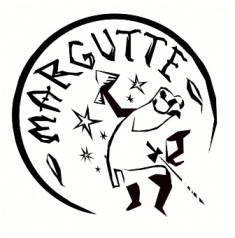SILVIA PIO
He will judge between the nations
and will settle disputes for many peoples.
They will beat their swords into plowshares
and their spears into pruning hooks.
Nation will not take up sword against nation,
nor will they train for war anymore.
(Isaiah 2:4 from https://www.biblegateway.com/)
A lesser-known work of the famous painter, “War and Peace,” has become the site of the French National Picasso Museum. Painted in 1952, when Picasso was 70, it covers the walls of the once-derelict Romanesque chapel in the castle of Vallauris, Provence, where the painter lived at the time. It was painted in Picasso’s studio Le Fournas and exhibited in Rome and Milan in 1953 before being placed in the chapel in 1954. Spanning over 100 square meters, this monumental painting was crafted on panels flexible enough to be laid over the chapel’s vaults. It was Picasso himself who decided that the place should be turned into a Temple of Peace, lit by candles only.
Created at the time of the Korean War, the painting was inspired by Prophet Isaiah’s visions (see above).
On opposing walls, it represents Peace and War. On one side of the vault, a yellow sun, containing many colours and having grain spikes as rays, gives light to peaceful scenes, with a group of people in a meadow: a woman breastfeeding, a man preparing food, and another figure busy writing. Behind them rise a tree with golden fruits and a vine. On the side, on a blue field like heaven on earth, women, men, and children are playfully entertaining themselves, and a winged horse is leading a plow guided by a child. A sand clock, an owl, an aviary with fish and an aquarium with birds complete the scene. They are all symbolic images: peace is a powerful force that helps not only people but also creative activities thrive.
In contrast, war, depicted on the opposite wall, is a disquieting scene in dark colours. A sort of devil representing death, armed with a sword covered in blood, carrying a sack of skulls on his shoulders with a round container full of insects, worms, and strange beings, leads a cart drawn by black horses stamping on a book and a wheat field. In the background, some human shadows wield cold weapons. From the blood-red ground, two hands reach out in despair. In front of the cart, a human figure (all characters are naked) representing justice rises behind a big shield depicting a dove.
On the wall in the middle, four figures in different colours hold a globe with the never-failing dove and recall the idea of harmony among peoples.
The message is simple and direct, and above all always relevant.
To admire the pictures of the painting, and to get information about the Museum and what to do at Vallauris, visit the website here.
The National Picasso Museum also displays ceramics, terracottas and sculptures by Picasso, together with many photographs documenting the artist’s private and professional life.
It is interesting to note that the pottery-making tradition of Vallauris dates back to the Gallo-Roman era, when local clay deposits were used to make bricks and pots. At the end of the 16th century there were three potteries in present-day Des Tours Road; in 1829 there were thirty-two, producing kitchenware and art pieces. The arrival of Picasso in 1948 gave a boost to the industry.
Vallauris, which is a “Town of Artisans” thanks to its internationally renowned ceramics tradition, hosts a Museum of Ceramics and attracts crowds of talented artists and visitors.
(The picture in this article is a screenshot of the website)
Italian


